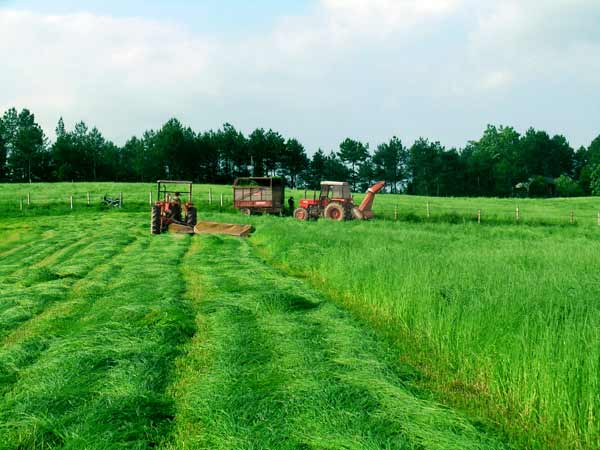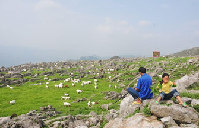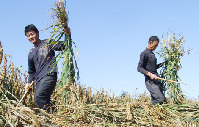Pastures are now alive
Updated: 2013-11-28 10:00
By Sun Yuanqing (China Daily)
|
|||||||||||
 |
|
The grass varieties imported from New Zealand and Australia have brought the farm a revitalized landscape. Photos Provided to China Daily |
Thirty years ago, this was a barren wasteland. Now, Dushan county is a provincial promoter of pasture technologies. Sun Yuanqing reports.
The slopes are boundless and the grass is flourishing. With the mooing and bleating, one could easily mistake this grazing pasture in Dushan county, Guizhou province in Southwest China for a farm in New Zealand.
| Bleat of the hybrid ushers in new era |
| Seeds of hope |
The milk tastes the part too. This is actually one of the few places in China where you can taste fresh milk produced by cows that run free 24 hours a day.
A barren wasteland 30 years ago, Dushan demonstrates how New Zealand experience can be applied in Southwest China, which has one of the most typical karst landscapes in the world.
"People thought it impossible to develop pasture and husbandry here, but we have proven them wrong," says Zhang Buyun, chairman of the labor union of the Dushan Pastoral and Seed Demonstration Farm. He has witnessed and taken part in the endeavor to change Dushan from a rocky deserted land to one of China's best grazing pastures.
It is estimated that more than 40 percent of the land, or 320,000 square kilometers, in Guizhou and Yunnan provinces and the Guangxi Zhuang autonomous region, suffers from stony desertification. Forests and grassland in the fragile karst area were set on fire and transformed into farmland to feed more people, causing natural hazards, low fertility and eventually poverty.
Best breeds
Over the past two decades, the Dushan farm has developed from a local seed provider to a provincial promotional center of pasture technologies in Guizhou and the neighboring provinces.
Every year, the Dushan farm produces 30 tons of grass seeds. These include some of the best breeds of pasture, like ryegrass, white clover, red clover and cocksfoot.
About 90 percent of the seeds are provided to the grassland in Guizhou. The rest of the seeds are sold to provinces including Sichuan, Gansu and Guangxi, where the altitude is similar to Guizhou and the landscape is too steep to plant economic crops.
Dushan have so far helped develop more than 400,000 hectares of grassland in Guizhou and more than 13,333 hectares outside of Guizhou, saving water and soil while increasing the soil fertility in these areas.
Related: Time line
For more Eco China, hereRelated Stories
Bleat of the hybrid ushers in new era 2013-11-07 09:31
Seeds of hope 2013-08-28 09:40
Going nuts 2013-08-14 17:58
Liyuan Library in Beijing 2013-07-25 01:00
Sticking up for sustainability 2013-07-25 01:00
Digging deep to discover beauty 2013-04-11 09:27
Today's Top News
Chinese premier carries hectic schedule
EU, China set timetable for talks
China calm in face of US overflight
China to be largest oil importer
Clean energy fueling the future
China, Romania call their ties 'exemplary'
US B-52 in air zone monitored
Court rejects appeal of military singers' son
Hot Topics
Lunar probe , China growth forecasts, Emission rules get tougher, China seen through 'colored lens', International board,
Editor's Picks

|

|

|

|

|

|








